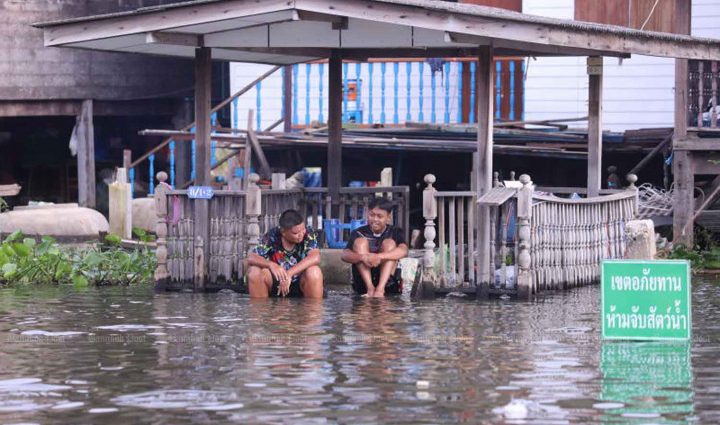Levels could hinder efforts to ease floods

Water volume in 27 dams and reservoirs nationwide exceeds 80% of capacity, which could hinder efforts to ease flooding in many areas, according to the Royal Irrigation Department (RID).
Figures showed Ubol Ratana Dam in Khon Kaen holds the most water, at 132% of capacity.
Pasak Jolasid Dam in Lop Buri was reportedly holding water at 114% of its capacity, followed by Kwae Noi Bamrung Daen Dam in Phitsanulok (101%), Bhumibol Dam in Tak (83%) and Sirikit Dam in Uttaradit (69%).
The RID said the Pasak Jolasid Dam will maintain its discharge rate at 900 cubic metres per second (m³/s) so as to avoid worsening the flood situation downstream.
The RID also warned riverside communities, particularly those located near Bang Kham River in Lop Buri, to watch out for water surges.
Bangkok governor Chadchart Sittipunt gave his assurances that no water would be diverted to city areas.
The RID will drain most water out of Bueng Farang and Nakhon Nueang Khet canals in the Pad Rew area of Chachoengsao to the east. City Hall will also set up floodwalls to reinforce a defence line on the eastern side of the city for safety.
In Ayutthaya, about 48,500 households in 132 tambons of 12 districts were affected by floods with locals getting around in boats, a source said.
Waterways and rivers cutting through the province keep rising on account of more water, at 3,154 m³/s, being released from the Chao Phraya barrage.
The Rama VI Dam was also expediting the discharge of water at 1,038 m³/s as water from the North accumulates at the dam, the RID said.
Meanwhile, the floodwall in Nonthaburi has reportedly collapsed, resulting in adjoining areas around Rama V Bridge and the Wat In community becoming submerged.
In the northeastern region, floods remain a severe problem for many residents, particularly in worst-hit Ubon Ratchathani.
Kittunya Wajadee, Pheu Thai MP for Ubon Ratchathani’s Constituency 3, said the flooding has devastated agricultural areas, damaged homes and crippled roads in Warin Chamrap district. On Tuesday, the Mun River overflowed as the water rose to 11.5 metres — seven metres higher than the banks, submerging nearby areas and prompting the evacuation of more than 1,500 local families.
Rescuers and local administrative organisations have distributed relief supplies to residents. However, the operation was hampered by strong currents, the MP said. Also in Ubon Ratchathani, many homes and schools were under five metres of water in Phibun Mangsahan district, local authorities said, adding assistance has not reached some of these areas.
Vast areas, where rice was about to be harvested, were swamped, ruining the crop. At Ban Pak Ya School, water 3-4 metres high, submerging the ground floor, the authorities said.
In Khon Kaen, Pongsakorn Ruangmontri, director of the Northeast Hydro Power Plant, said the Ubol Ratana Dam will maintain its discharge rate at 54 million m³ per day until the end of the month, after which time the provincial water resource sub-committee will assess the situation and decide whether to review the discharge rate.
Pol Col Thanawat Deebunmee Na Chumphae, deputy chief of Khon Kaen provincial police, said many districts have been impacted by varying degrees including Muang, Nam Phong, Mancha Khiri, Phu Wiang, Nong Na Kham, Chonnabot and Waeng Noi.
In Nakhon Ratchasima, governor Sayam Sirimongkol said floods in nine districts were expected to worsen.

